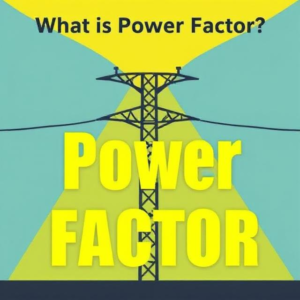1. What is Energy Efficiency?
Energy efficiency means using less energy to do the same task. In the case of consumer electronics, it refers to how well an electronic device uses power to operate without wasting too much energy.
For example, a LED TV that uses less electricity to give you the same picture quality as an older plasma TV is considered more energy-efficient. By using less energy, these devices save you money on electricity bills and help the environment by reducing the demand for energy production.

2. Why is Energy Efficiency Important in Consumer Electronics?
- Save Money: Devices that use less energy cost less to run. Over time, this can save you a lot of money on electricity bills.
- Environmental Impact: Using less energy means less pollution because power plants often burn fossil fuels to create electricity, which can harm the environment. More energy-efficient devices help reduce pollution and energy consumption.
- Longer Battery Life: For portable devices like smartphones, tablets, or laptops, energy efficiency means you don’t need to charge your device as often, making it more convenient to use on the go.
3. How Can Consumer Electronics Be Made More Energy-Efficient?
A. Low Power Components
Modern devices use energy-efficient components (like processors, displays, and batteries) that consume less power. For example, a processor in a smartphone may be designed to run at lower power when performing less intensive tasks (like browsing the web) and use more power only when needed (like playing a game).
B. Smart Power Management
Devices can automatically manage their energy use based on what you’re doing. For example:
- Sleep modes: Many devices automatically switch to low power mode when you’re not using them. A smartphone might dim the screen or turn off background apps when you’re not interacting with it.
- Power-saving features: A laptop might reduce the brightness of the screen or turn off Wi-Fi when it’s running on battery to conserve power.
C. Energy-Efficient Displays
Display technology has come a long way. Newer screens, like LED or OLED, use less energy than older technologies like LCD. These screens are designed to light up only the necessary pixels, which reduces power consumption.
D. Improved Batteries
Devices like smartphones, laptops, and electric vehicles rely on batteries. Battery technology is improving, which means devices can store more energy in the same size battery and use it more efficiently. This leads to longer battery life and fewer charges needed.
E. Power Adapters and Charging Efficiency
Many consumer electronics, especially smartphones and laptops, come with chargers that are more energy-efficient. Some chargers are designed to stop using power when the device is fully charged, preventing energy waste.
F. Energy-Efficient Standards and Certifications
Governments and organizations set energy efficiency standards to help consumers choose energy-saving devices. For example:
- Energy Star: A certification that indicates a device meets energy efficiency guidelines.
- EU Energy Label: A system used in Europe to show how energy-efficient an appliance is (from A+++ to D).
4. Examples of Energy-Efficient Consumer Electronics
- Smartphones: New smartphones are designed to use less power by optimizing the processor, screen brightness, and battery management. Many also feature fast-charging technology, meaning they charge quicker and use energy more efficiently.
- LED Light Bulbs: These are much more energy-efficient compared to traditional incandescent bulbs. They use less electricity, last longer, and produce the same amount of light.
- Smart Thermostats: Devices like the Nest Thermostat can adjust your home’s heating and cooling automatically to save energy when you’re not home, reducing unnecessary energy use.
- Laptops and PCs: Many laptops now use processors and power management systems designed to maximize battery life while still providing strong performance.
5. How Can Consumers Benefit from Energy Efficiency?
- Lower Utility Bills: Energy-efficient devices consume less electricity, which directly lowers your electricity costs.
- Convenience: For devices like smartphones or laptops, better energy efficiency means longer battery life, so you don’t have to charge as often.
- Environmental Benefits: Using energy-efficient devices reduces overall energy demand, which helps cut down on harmful emissions from power plants.
6. In Summary:
Energy efficiency in consumer electronics is all about using less electricity to perform the same tasks. This is achieved by using energy-saving components, smart power management, and optimizing battery life. By using energy-efficient devices, we can save money on electricity bills, extend the life of our devices, and contribute to a healthier planet by reducing pollution.











